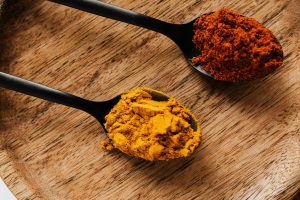Exploring the Nuances of Different Coffee Brewing Methods
Ah, coffee. A warm and comforting beverage that fuels our busy lives and awakens our senses each morning. But have you ever stopped to consider the intricate and nuanced world of coffee brewing methods? From French press to pour over, each method has its own unique characteristics that can drastically alter the taste and overall experience of your cup of joe. Join me as we explore the various brewing methods and uncover what makes each one so special.
The Basics of Coffee Brewing
Before we dive into the different brewing methods, let’s go back to the basics. Coffee is made by steeping ground coffee beans in hot water. The water extracts the flavor and oils from the beans, resulting in the delicious beverage we know and love. However, the way in which the water and beans interact can vary depending on the brewing method used.
The French Press Method
Let’s start with the French press, also known as a cafetière or coffee plunger. This method involves steeping coarsely ground coffee beans in hot water for several minutes before pressing the plunger down to separate the grounds from the liquid. This technique allows for a full immersion of the beans, resulting in a rich and full-bodied cup of coffee.
One of the advantages of the French press method is that it allows for more control over the brewing process. By adjusting the grind size and steeping time, you can achieve a more customized flavor profile. However, the downside to this method is that it can produce a slightly gritty cup of coffee due to some sediment making its way into the final product.
The Pour Over Method
Next up, we have the pour over method. As the name suggests, this method involves pouring hot water over ground coffee beans, allowing the water to filter through and extracting the flavor. The water is typically poured in a circular motion, creating a “bloom” of bubbles that signifies the release of carbon dioxide from the beans.
The pour over method is praised for its ability to produce a clean and crisp cup of coffee with a delicate and bright flavor. It also allows for more control over the brewing process, as the rate of the pour can be adjusted to achieve different flavor profiles. However, this method requires a bit more skill and precision compared to others, and it can be time-consuming to master.
The Drip Method
Perhaps the most common and convenient brewing method is the drip method, also known as automatic coffee makers. This method involves pouring hot water over ground coffee beans, which then filters through a paper or metal filter and into a carafe. The result is a smooth and consistent cup of coffee.
The drip method is a favorite among busy folks who don’t have the time to manually brew their coffee. It’s also beginner-friendly, as it doesn’t require much skill or effort. However, the downside is that you may lose some of the subtle flavors and nuances that other methods can bring out.
Exploring the Nuances
We’ve covered the basic brewing methods, but what makes each one unique? How do they differ in terms of taste and overall experience? Let’s take a closer look at the nuances of each method.
The Importance of Grind Size
One of the key factors that can affect the flavor of your coffee is the grind size. Different brewing methods require different grind sizes, and adjusting this can drastically alter the taste of your cup. For example, French press coffee calls for a coarse grind to prevent sediment from making its way into the final product. On the other hand, the pour over method requires a fine grind to ensure proper extraction.
The Role of Temperature
Another important factor to consider is water temperature. The optimal temperature for brewing coffee falls between 195-205°F (90-96°C). If the water is too hot, it can result in a bitter and over-extracted cup of coffee. On the other hand, if the water is not hot enough, you may end up with a weak and under-extracted cup.
Press vs. Pour: The Extraction Difference
The main difference between the French press and pour over methods lies in the extraction process. The French press allows for a full immersion of the beans, resulting in a more bold and full-bodied cup. On the other hand, the pour over method relies on a slower and more controlled extraction, resulting in a cleaner and brighter cup of coffee.
Which Method is Right for You?
With so many brewing methods to choose from, it can be overwhelming to decide which one is right for you. Ultimately, it boils down to personal preference and what you value most in your coffee experience. Do you prefer a strong and bold cup, or a delicate and crisp one? Are you willing to put in the time and effort to master a more complicated method, or do you prefer a quick and convenient option?
Whichever method you choose, remember that the quality of your coffee beans also plays a significant role in the final product. So be sure to use fresh, high-quality beans for the best results. And don’t be afraid to experiment and try out different brewing methods to find your perfect cup of coffee. After all, isn’t that one of the joys of being a coffee lover?
Embrace the Nuances of Coffee Brewing
In conclusion, brewing coffee is not just a simple process, but an intricate and nuanced one. Each method has its own unique characteristics that can affect the taste and overall experience of your cup. By understanding the basics and exploring the subtleties of each method, you can elevate your coffee brewing game and truly appreciate the art of making a perfect cup of coffee. So go ahead, experiment with different methods, and savor every sip.










